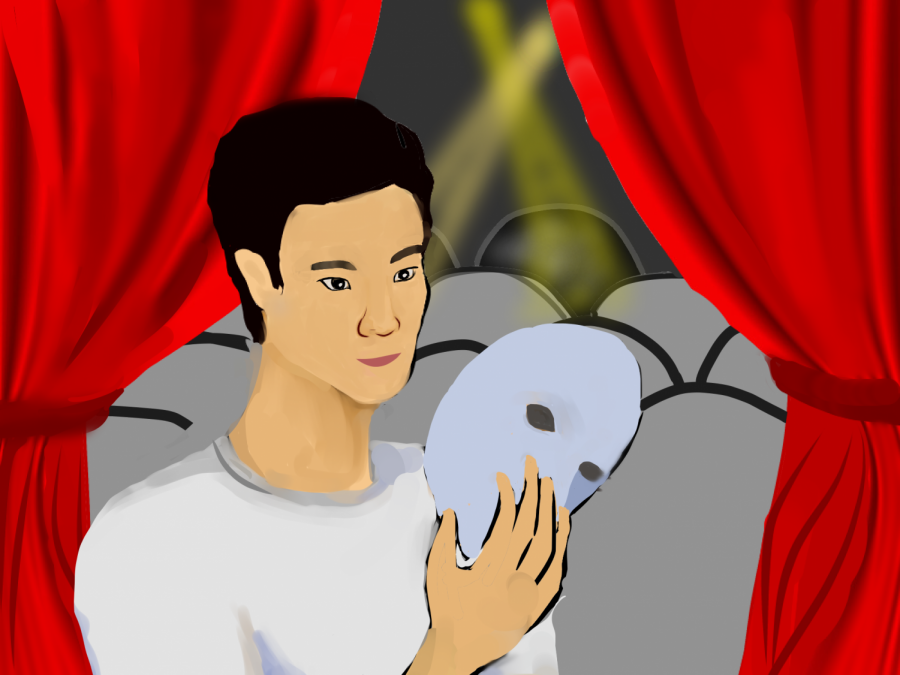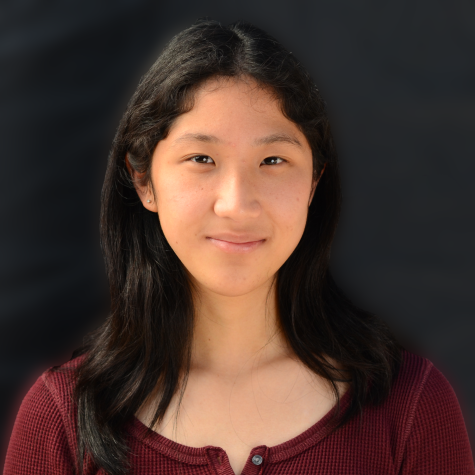Hidden behind a mask: American cinema’s inauthentic portrayal of Asian Americans
American cinema strongly reflects the cultural prejudices of 20th century America. Only with strong participation and representation will Asians move to our rightful place as central contributors to American culture.
March 26, 2021
Authorities stated that the shooter who killed eight people in Atlanta on Tuesday, six of whom were Asian women, hoped to “eliminate” a “temptation.” The intersection of the victims’ race and gender exposes the specific vulnerabilities of Asian women, who have been portrayed as one-dimensional objects who fit into the role of the seductive “dragon lady” or exotic prostitutes who speak broken English, as seen in Stanley Kubrick’s film “Full Metal Jacket,” in which the Vietnamese woman is given the title “Da Nang Hooker” instead of a name.
Hollywood’s failure to provide Asian creators with an opportunity to contribute to projects results in imaginary stereotypes in place of accurate characters.
Right off the bat of answering a question about the research that went into the costume design of Mulan (2020), costume designer Bina Daigeler explains that she traveled to Europe and examined “all the museums that had Chinese departments” before visiting China for three weeks to absorb the “colorful” culture. As genuine as her intentions were, three weeks cannot possibly make up for a lifetime of heritage a Chinese costume designer could have brought to the set. Interviews with the rest of the mostly white writing and directorial team emphasize the amount of research and dedication they poured into a story about a culture they have no familial connection with.
Without Asians in creative positions behind the camera, Mulan falls short of the authentic portrayal it claims. The film has also generated criticism due to the credits thanking Chinese municipalities in Xinjiang, the site of detention camps run by the Chinese government to target Uighur Muslims. Despite the incredible $200 million budget costs of producing the movie, Disney fails to contribute more meaning beyond the trite statement of “bringing honor to the family.” At least the film features a full Asian cast, a vast improvement from old Hollywood.
Critical and commercial success Breakfast at Tiffany’s (1961), praised for its stylish portrayal of femininity, follows the story of Holly Golightly, a young woman finding her way in New York City. However, under the chic glamour and posters adorning countless walls of vintage-lovers is a more sinister stereotype–that of Japanese landlord I.Y. Yunioshi. Fulfilling the role of slapstick comedy, Yunioshi immediately rams his head into a paper lantern upon waking up. Mumbling incoherent noises, he trips through his apartment in a baggy blue bathrobe, tipping over a light stand and setting off a flash of the camera. In fact, the only mishap Yunioshi seems to avoid is dropping his potted plant. As he steps out of his apartment, Yunioshi’s clumsiness is thrown in sharp contrast against Holly Golightly, dressed elegantly and gleaming with diamonds and pearls.
As she and her companion make their way up the stairs, they are interrupted by Mr. Yunioshi barking in accented English. The shot frames him in a curve of the bannister, his outraged features exaggerated by the otherwise neutral background. He looks down to the camera, menacingly shaking his finger as he scolds Holly Golightly for forgetting her key to the apartment complex. In response, she calmly adjusts her sunglasses and glances back up at her landlord, calming him down by promising that she “might let [him] take those pictures [he] mentioned.” Yunioshi appears just as blustering and indignant in all his following scenes, and his character is not afforded complexity beyond a physical comedic relief as the leering, nearsighted Japanese landlord.
Mr. Yunioshi represents merely one particularly notorious case of Hollywood yellowface that derides East Asian culture in general and East Asian men in particular. Surveying the history of yellowface reveals the persistence of the stereotype and the need for continued inclusion of Asian Americans in the industry.
American Cinema strongly reflects the cultural prejudices of 20th century America. With his slanted eyes, prominent buck teeth, glasses and short stature, Yunioshi is already a familiar character for American audiences. In fact, Yunioshi was portrayed by white actor Mickey Rooney, who taped back his eyelids for the role. Due to the lack of Asian actors, well-known white actors performing yellowface replaced Asian culture, allowing dominant American culture to draw on the imagined qualities of Asian culture and market false prejudices to the audience. Only with strong participation and representation will Asians move to our rightful place as central contributors to American culture.
When Asians rose to directorial positions, Hollywood studios began to grasp the financial benefits of telling Asian stories and populating films with actual Asians. Now there was a new phenomenon, the handsome, wealthy heir, as shown through the role of Nick Young in Crazy Rich Asians (2018). Albeit a desirable heir to an elite family in Singapore rather than an average Asian American, Nick displays far more complexity than in previous roles for East Asian men. Crazy Rich Asians itself was a turning point for Asian American inclusion in cinema, directed by Jon Chu and the first film in 20 years produced by a major Hollywood studio featuring a mostly Asian cast. Based on author Kevin Kwan’s trilogy, it follows a love story challenged by East-West cultural differences.
No character better embodies an understanding of both cultures than Nick, raised with an emphasis on family yet taught to value independence while living abroad in New York City. Despite marketing such a desirable image of East Asian masculinity to American audiences, or perhaps by marketing the handsome heir who speaks with a refined English accent, Crazy Rich Asians caters to the stereotype of Asians depending on economic affluence and grand, occasionally tasteless displays of wealth to be found interesting. Ultimately, Nick’s mother gives in to the Western standard of chasing one’s own happiness, and he runs after his girlfriend to propose on an airplane.
The movie flaunts a glorious yet uptight world of East Asian dynastic families, a far stretch from the realities of most Asian Americans. While not nearly as uncomfortable as Emma Stone declaring herself to be a biracial Chinese and Hawaiian woman in Aloha, the movie nevertheless offers a flawed and stereotyped view of East-West tensions and contemporary Asian culture. Clearly there is more work to be done.
Much of the progression in Asian cinematic representation comes from an increase in diversity in writers, directors, actors and more. Rather than shaping films and series around the imagined Asian experience, Asian American artists should be able to tell their own experiences to replace previous stereotypes with authentic and complex Asian characters as nuanced individuals. Spotlighting the work of Asian artists will continue to push back against foreign stereotyping of East Asian cultures as the exotic villain, kung fu master, or effeminate foreigner and slowly create protagonists with personal agency to dictate their own stories to Western audiences.
Among the increasing number of projects that have cropped up featuring Asian casts, The Farewell handles the reality of first-generation Asian immigrants based on the genuine life experience of director Lulu Wang. Awkawfina plays Chinese American protagonist Billi, who immigrated to New York from China at a young age, travels back to Changchun for a cousin’s wedding. However, the wedding is an excuse for the real reason for the family gathering: Billi’s grandmother has been diagnosed with cancer, and this may be their last opportunity to see her again. However, Billi is uncomfortable with the fact that her grandmother is oblivious to the diagnosis and struggles with keeping the secret as her family members calmly plan for the wedding.
Her unease is attributed to the broader cultural difference between the East and the West, with the West defined as an emphasis on the individual and the East valuing the importance of community. From the clatter of plates and chopsticks around the dinner table to characters’ fluency in Mandarin, finally seeing a character who not only looked like me but also had such similar family dynamics reflected the importance of my own identity. As a child, I could never have imagined such a story.
Last summer, the Academy admitted a new wave of members as part of its initiative to double the number of women and underrepresented minorities. The 2020 class of Academy members is made up of 45% women, 36% underrepresented ethnic or racial minorities, and 49% international artists and executives. Perhaps this fundamental change to the composition of not only the cast but also directors, screenwriters, casting directors, executives and more, will finally represent Asian Americans as more than just a blockbuster trend, but rather individuals with agency who have shaped American society.




![LALC Vice President of External Affairs Raeanne Li (11) explains the International Phonetic Alphabet to attendees. "We decided to have more fun topics this year instead of just talking about the same things every year so our older members can also [enjoy],” Raeanne said.](https://harkeraquila.com/wp-content/uploads/2025/10/DSC_4627-1200x795.jpg)


















![“[Building nerf blasters] became this outlet of creativity for me that hasn't been matched by anything else. The process [of] making a build complete to your desire is such a painstakingly difficult process, but I've had to learn from [the skills needed from] soldering to proper painting. There's so many different options for everything, if you think about it, it exists. The best part is [that] if it doesn't exist, you can build it yourself," Ishaan Parate said.](https://harkeraquila.com/wp-content/uploads/2022/08/DSC_8149-900x604.jpg)




![“When I came into high school, I was ready to be a follower. But DECA was a game changer for me. It helped me overcome my fear of public speaking, and it's played such a major role in who I've become today. To be able to successfully lead a chapter of 150 students, an officer team and be one of the upperclassmen I once really admired is something I'm [really] proud of,” Anvitha Tummala ('21) said.](https://harkeraquila.com/wp-content/uploads/2021/07/Screen-Shot-2021-07-25-at-9.50.05-AM-900x594.png)







![“I think getting up in the morning and having a sense of purpose [is exciting]. I think without a certain amount of drive, life is kind of obsolete and mundane, and I think having that every single day is what makes each day unique and kind of makes life exciting,” Neymika Jain (12) said.](https://harkeraquila.com/wp-content/uploads/2017/06/Screen-Shot-2017-06-03-at-4.54.16-PM.png)








![“My slogan is ‘slow feet, don’t eat, and I’m hungry.’ You need to run fast to get where you are–you aren't going to get those championships if you aren't fast,” Angel Cervantes (12) said. “I want to do well in school on my tests and in track and win championships for my team. I live by that, [and] I can do that anywhere: in the classroom or on the field.”](https://harkeraquila.com/wp-content/uploads/2018/06/DSC5146-900x601.jpg)
![“[Volleyball has] taught me how to fall correctly, and another thing it taught is that you don’t have to be the best at something to be good at it. If you just hit the ball in a smart way, then it still scores points and you’re good at it. You could be a background player and still make a much bigger impact on the team than you would think,” Anya Gert (’20) said.](https://harkeraquila.com/wp-content/uploads/2020/06/AnnaGert_JinTuan_HoHPhotoEdited-600x900.jpeg)

![“I'm not nearly there yet, but [my confidence has] definitely been getting better since I was pretty shy and timid coming into Harker my freshman year. I know that there's a lot of people that are really confident in what they do, and I really admire them. Everyone's so driven and that has really pushed me to kind of try to find my own place in high school and be more confident,” Alyssa Huang (’20) said.](https://harkeraquila.com/wp-content/uploads/2020/06/AlyssaHuang_EmilyChen_HoHPhoto-900x749.jpeg)










